10 Best Cycling Recovery Techniques to Boost Your Performance
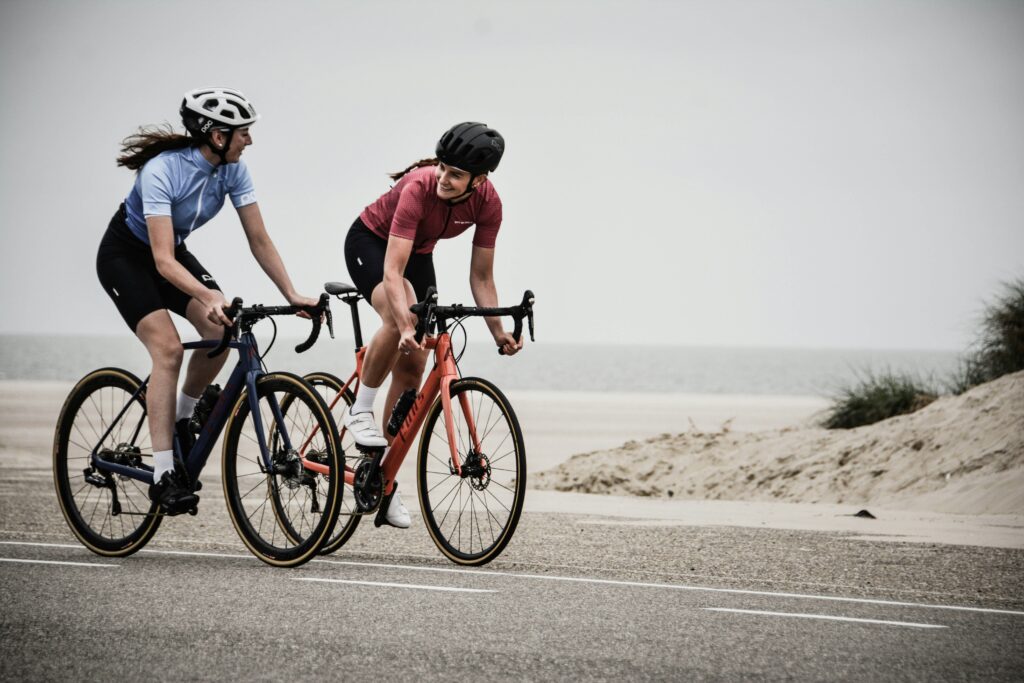
Many avid cyclists have learned that what you do off the bike significantly impacts your performance on it. Recovery isn’t about resting – it’s an active process that can dramatically improve your riding and keep you pedaling stronger for longer. Whether you’re a weekend warrior or a seasoned pro, these techniques will help you bounce back faster, ride harder, and enjoy your time in the saddle even more.
1. Active Recovery Rides: The Secret Weapon
There’s something magical about those easy spins the day after a grueling ride. Active recovery rides act as a reset button for your legs. Aim for a 30–45-minute ride at about 50-60% of your max heart rate. It’s tempting to push harder but keeping it easy is crucial. These gentle rides increase blood flow to your muscles, helping to flush out the metabolic waste that builds up during intense efforts.
These rides provide an excellent opportunity to focus on your form. With the pressure off, you can really dial in your pedaling technique and posture. Pay attention to maintaining a smooth, circular pedal stroke and keeping your upper body relaxed. This focus on technique during easy rides can translate to improved efficiency when you’re pushing hard.
Active recovery rides also offer mental benefits. They allow you to enjoy the simple pleasure of cycling without the stress of hitting specific power targets or completing intervals. This mental break can be just as important as the physical recovery, helping to prevent burnout and keep your passion for cycling alive.
2. Foam Rolling: Your Personal Massage Therapist
Foam rolling is an excellent post-ride ritual, and for good reason. This self-myofascial release technique helps break up adhesions in the fascia – the connective tissue surrounding your muscles. It’s like giving yourself a deep tissue massage, but at a fraction of the cost. Focus on my quads, hamstrings, calves, and glutes, spending about 10-15 minutes total. It can be uncomfortable, especially when you hit those tight spots, but the relief afterward is worth it.
Consistent foam rolling can improve flexibility and reduce muscle soreness, especially after long rides.
When foam rolling, take your time and breathe deeply, especially when you find those tender areas. The discomfort you feel often shows that you’re targeting the right spots. Start with light pressure and gradually increase as your muscles relax. Roll slowly over each muscle group, pausing on any particularly tight or sore areas.
For cyclists, paying extra attention to the IT band can be beneficial. This thick band of tissue runs along the outside of your thigh and can become tight and painful, especially after long rides. While you can’t actually roll out the IT band itself, rolling the surrounding muscles can help reduce tension.
Don’t limit yourself to just post-ride rolling. Incorporating foam rolling into your daily routine, even on rest days, can help maintain muscle flexibility and prevent the build-up of tension that can lead to injuries.
One foam roller to try is the TriggerPoint GRID Foam Roller – Its ridged design mimics the feel of a massage therapist’s hands, helping to release knots and promote circulation.

3. Compression Gear: Squeeze Your Way to Recovery
Slipping on compression tights or socks after a ride might seem like a small thing, but it can make a big difference in how you feel the next day. These garments work by applying pressure to your muscles, which can help reduce swelling and promote blood flow. You may be skeptical at first, but after trying compression gear for a few weeks, you will notice a significant reduction in post-ride muscle soreness. Soon you won’t want to tackle a long ride without wearing them.
The benefits of compression gear extend beyond just wearing them immediately after your ride. Try sleeping in compression tights to maximize the benefits overnight. This can be especially helpful during stage races or training camps where you’re riding hard day after day.
When choosing compression gear, look for graduated compression, which means the pressure is highest at the ankles and decreases as it moves up the leg. This design helps promote blood flow back to the heart, aiding in the removal of metabolic waste from your muscles. Roadbox Compression Cycling Tights are one highly rated example to try.

While compression gear can be useful, it’s important not to rely on it exclusively. It should be used in conjunction with other recovery techniques for the best results. Also, make sure the compression isn’t too tight – you want to feel supported, not constricted.
4. Nutrition and Hydration: Fuel Your Recovery
Recovery starts the moment you finish your ride, and what you put into your body in that crucial window can make or break your next performance. Aim to refuel within 30 minutes post-ride with a 3:1 ratio of carbohydrates to protein. This helps replenish glycogen stores and kickstarts muscle repair.
One go-to recovery meal is a smoothie made with banana, berries, Greek yogurt, and a scoop of whey protein. This combination provides quick-absorbing carbs to replenish glycogen, along with protein to support muscle repair. You can also add a handful of spinach for extra nutrients and a tablespoon of chia seeds for healthy fats and extra protein.
Hydration is equally important, as dehydration can seriously impair recovery. Sipping on an electrolyte-rich drink throughout the day after a hard ride is one way to counteract the effects of fluid loss. Making your own electrolyte drink can be as simple as using coconut water as a base, adding a pinch of sea salt and a squeeze of lemon for flavor and extra minerals.
LMNT Zero Sugar Electrolytes are one type of prepackaged mix that can be easily added to a bottle of water for quick hydration.
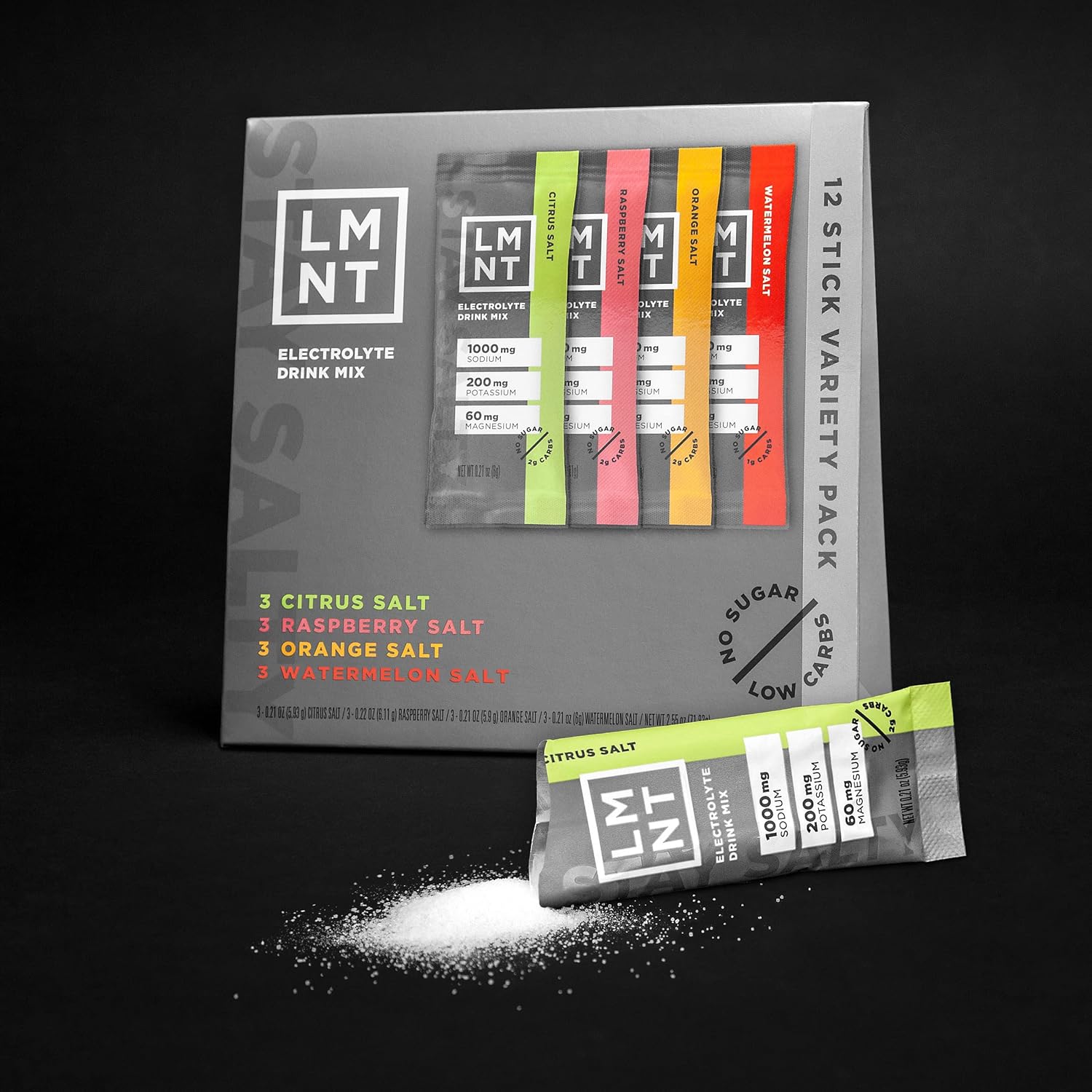
Don’t underestimate the power of whole foods in your recovery nutrition. While recovery shakes are convenient, a meal with complex carbohydrates, lean protein, and plenty of colorful vegetables can provide a wider range of nutrients to support your recovery. One tasty post-ride meal is a bowl of quinoa with grilled chicken, roasted vegetables, and avocado.
Remember that your body continues to recover long after your ride is over. Maintaining a balanced diet throughout the day, with a focus on whole, nutrient-dense foods, will support your overall recovery and prepare you for your next ride.
5. Quality Sleep: The Ultimate Recovery Tool
Training harder isn’t always the key to improvement. Without adequate sleep, all that hard work can go to waste. Sleep is when your body does most of its repair work, releasing growth hormone and regulating cortisol levels. Getting anywhere from 7-9 hours of quality sleep each night can produce a huge difference in recovery and performance. Creating a sleep-friendly environment with blackout curtains and a cool room temperature is a game-changer for many who struggle with a less-than-comfortable sleep environment.
To improve your sleep quality, try to maintain a consistent sleep schedule, even on weekends. Your body thrives on routine, and a regular sleep pattern can improve the quality of your rest.
Avoiding screens for at least an hour before bed and engaging in relaxing activities like reading or gentle stretching can help you fall asleep faster and sleep more soundly. If you’re struggling with sleep, consider tracking it using a sleep app or wearable device. This can provide insights into your sleep patterns and help you identify areas for improvement.
One example of a sleep device is the Hatch Restore Smart Sleep Machine, which combines gentle light, white noise, and bedtime routines to help you fall asleep naturally and wake up refreshed.

Another is the Manta Sleep Mask, a comfortable blackout mask with adjustable eye cups to block all light and improve REM sleep quality.
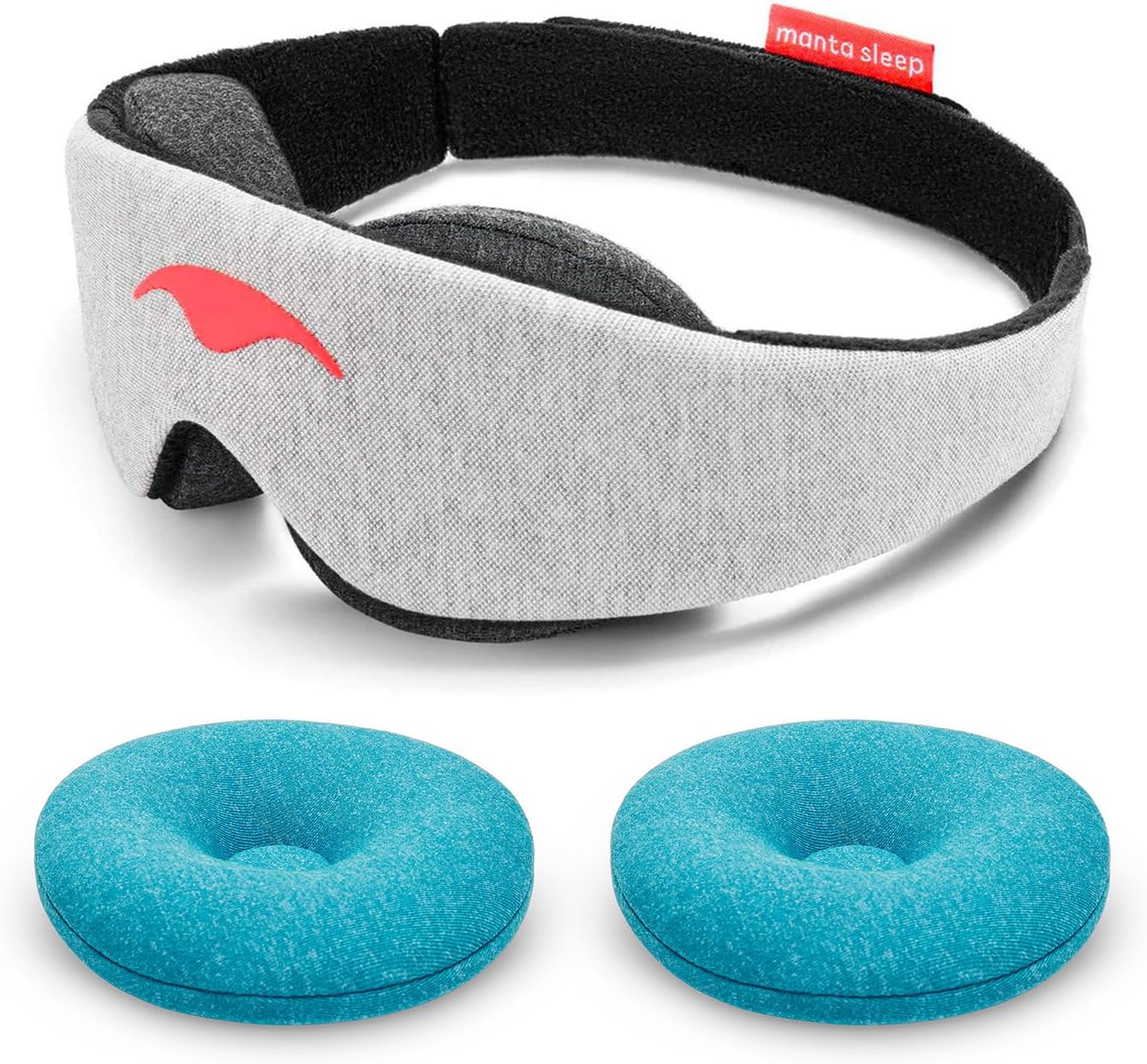
Some cyclists find that their heart rate stays elevated after intense evening workouts, making it harder to fall asleep. If this is the case for you, try scheduling your harder training sessions earlier in the day. Don’t underestimate the power of naps, especially if you’re training hard or not getting enough nighttime sleep. A 20–30-minute nap in the early afternoon can provide a significant boost to your recovery without interfering with your nighttime sleep.
6. Contrast Therapy: Hot and Cold for Quick Recovery
Alternating between hot and cold treatments might sound like torture, but it’s incredibly effective for reducing inflammation and promoting blood flow. Starting with 1 minute of cold water (around 50-59°F), followed by 3 minutes of hot water (98-104°F), repeating the cycle 3-4 times is a reasonable way to get this process rolling. This technique has been particularly helpful after races or extremely intense training sessions. The contrast between hot and cold creates a pumping action in your blood vessels, which can help flush out metabolic waste and reduce muscle soreness.
If you don’t have access to a shower or bath for contrast therapy, try alternating hot and cold packs on your legs. While not as effective as full-body immersion, it can still provide significant benefits. Keep a few reusable ice packs in your freezer and a heating pad handy for this purpose. For an extra recovery boost, try combining contrast therapy with gentle movement. During the warm phases, perform some light stretches or mobility exercises. This can help increase the circulation benefits and work out any lingering stiffness.
The FlexiKold Gel Flexible Ice Pack is a popular option that is reusable and comes in multiple sizes.
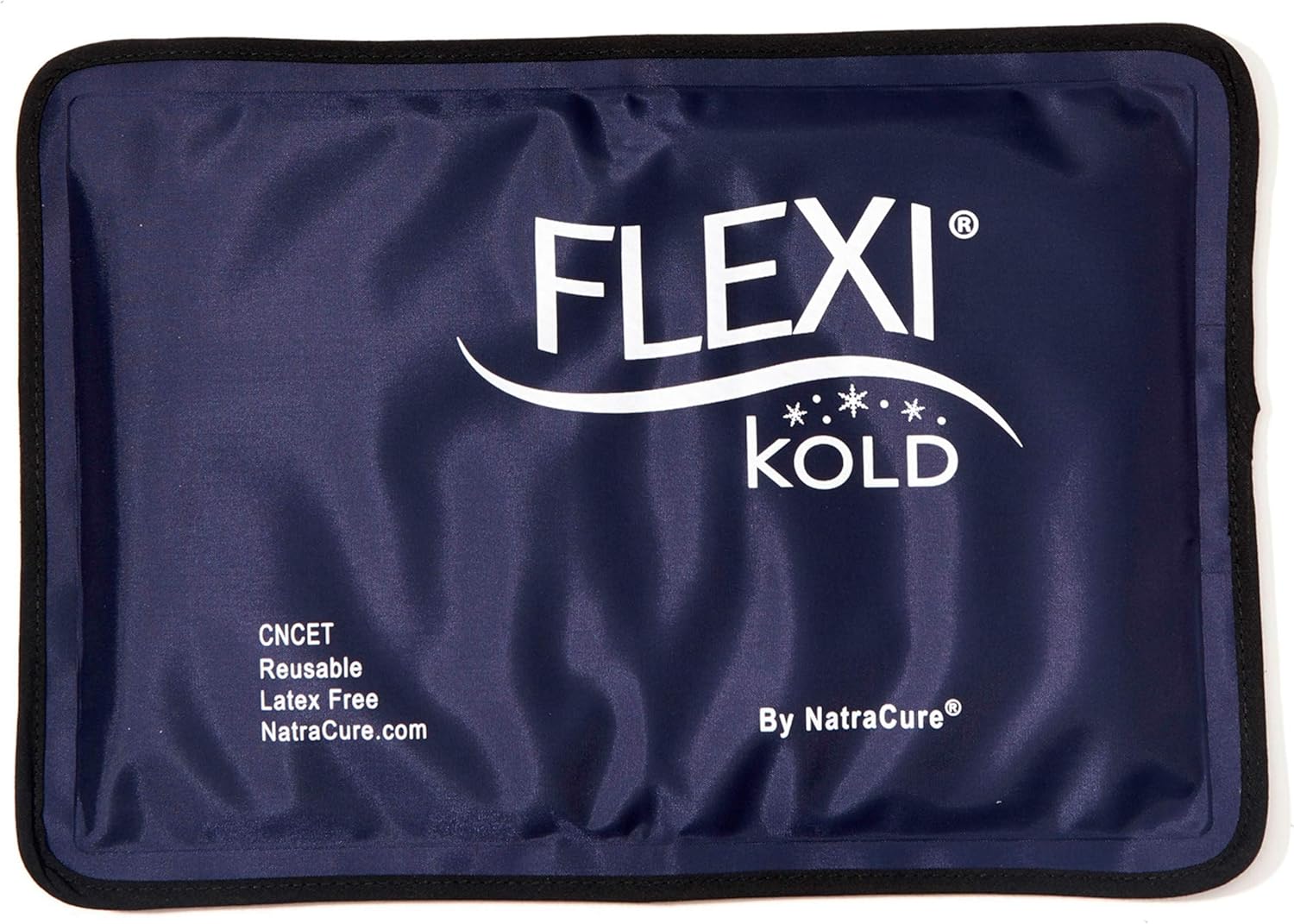
For a reusable heating pad, the SacksyThyme Microwave Heating Pad for Back, Neck, Shoulders, and Leg Pain is an all-natural option.
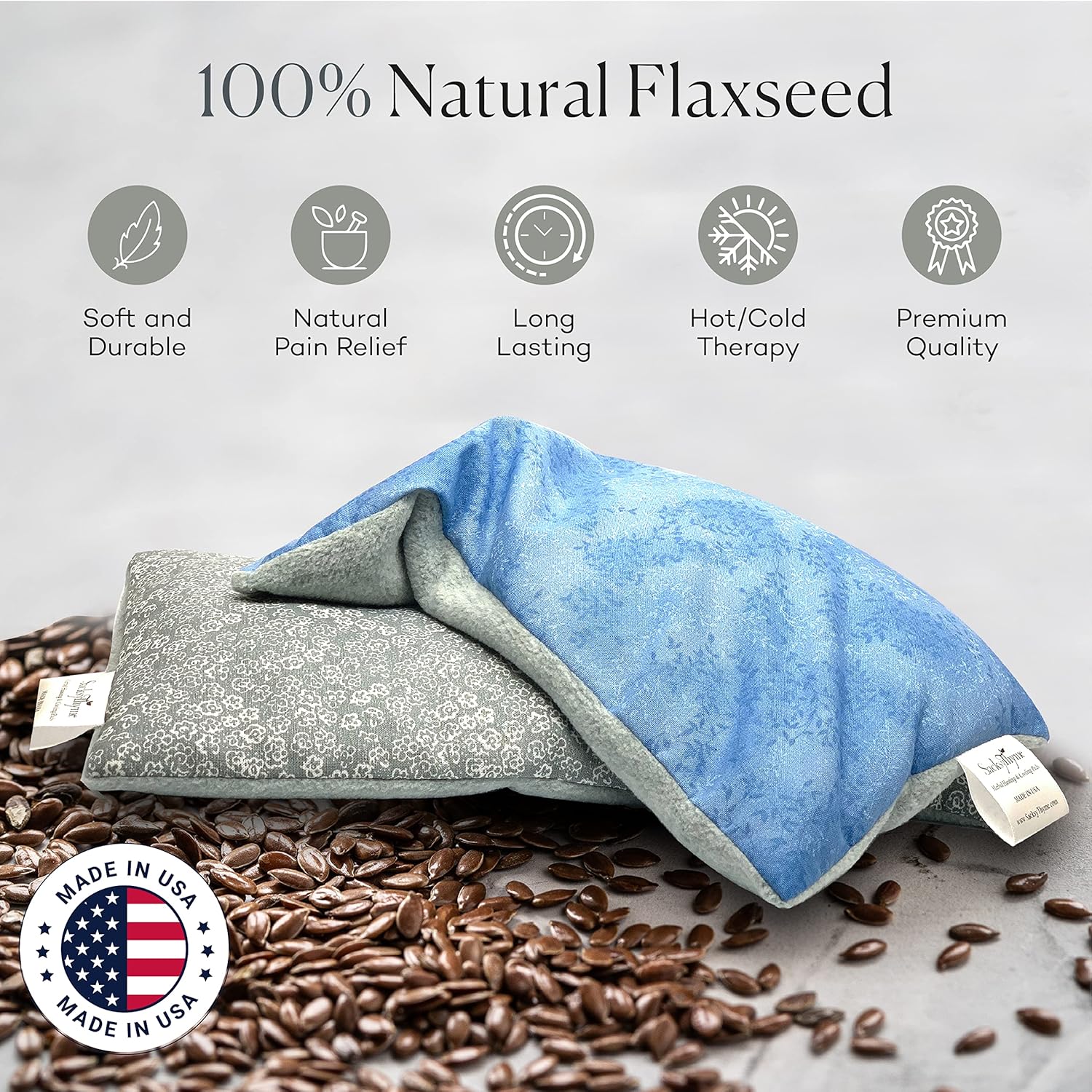
Remember to listen to your body when using contrast therapy. If you have any circulatory issues or are recovering from an injury, talk to a healthcare professional before trying this technique. Also, be cautious with the temperature extremes – you want to create a noticeable contrast, but not to the point of discomfort or pain.
7. Strategic Stretching: Flexibility for Longevity
Stretching is often overlooked, but it’s crucial for maintaining flexibility and preventing injury. Incorporate dynamic stretching into your warm-up routine and focus on gentle, static stretches post-ride. Paying special attention to hip flexors, hamstrings, and lower back – areas that often get tight from cycling – has helps maintain better posture on the bike and reduces risk of overuse injuries.
For dynamic stretching before a ride, focus on movements that mimic the action of cycling. Leg swings, walking lunges, and gentle twists help warm up the muscles and increase range of motion without decreasing power output. Post-ride, spend about 10-15 minutes on static stretching. Hold each stretch for 30-60 seconds, remembering to breathe deeply. This helps muscles relax and increases the effectiveness of the stretch.
Some key stretches for cyclists include:
- Pigeon pose for hip flexors and glutes
- Seated forward fold for hamstrings
- Cat-cow stretch for the spine
- Calf stretches against a wall
- Quadriceps stretch while standing
Don’t forget to stretch your upper body too. Cycling can lead to tightness in the shoulders and neck, so include some gentle shoulder rolls and neck stretches in your routine.
If you’re particularly tight or prone to injury, consider adding yoga to your recovery routine. Many cyclists find that a regular yoga practice improves their flexibility, core strength, and overall body awareness on the bike. One helpful read to get you started is “Yoga for Cyclists: Prevent Injury, Build Strength, Enhance Performance” by Lexie Williamson.
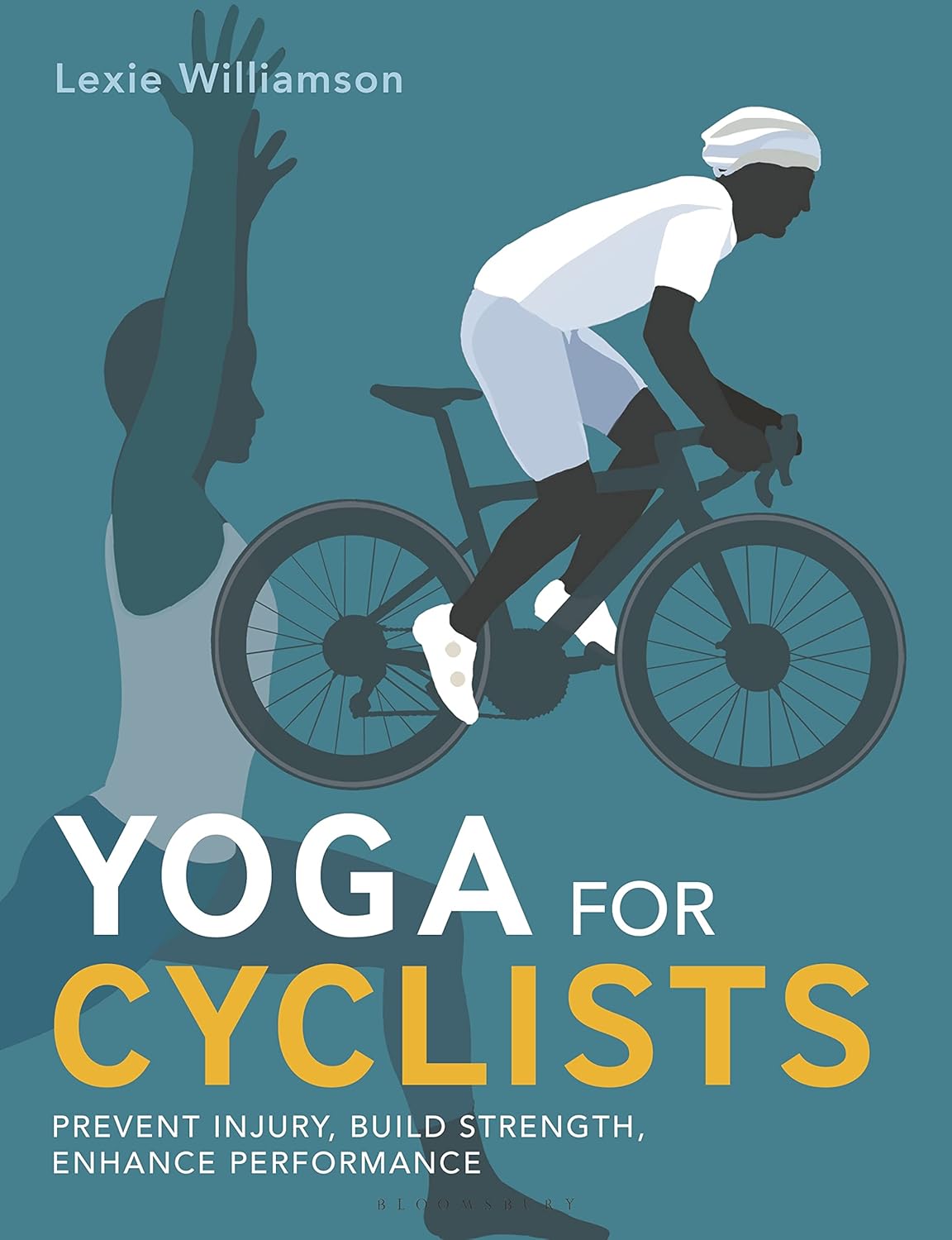
8. Massage and Percussive Therapy: Targeted Relief
Regular massage can be a game-changer for improved recovery, but it’s not always practical or affordable to get professional treatments. That’s where percussive therapy devices come in. These handheld tools deliver rapid bursts of pressure into your muscle tissues, helping to increase blood flow and break up knots.
Using the device for 1-2 minutes on each major muscle group post-ride is a well-rounded way to start. It’s especially effective on those hard-to-reach areas like the upper back and shoulders.
Start with a lighter pressure setting and gradually increase as your muscles warm up and relax.
When using a percussive therapy device, focus on the larger muscle groups first – quads, hamstrings, calves, and glutes. Then move to smaller, more specific areas that might be tight or sore. Pay attention to how your body responds – if an area feels particularly sensitive, spend a bit more time there, but don’t overdo it.
The TOLOCO Massage Gun, Deep Tissue Massage for Athletes is one example of a percussion massage tool with multiple heads to target different body areas.
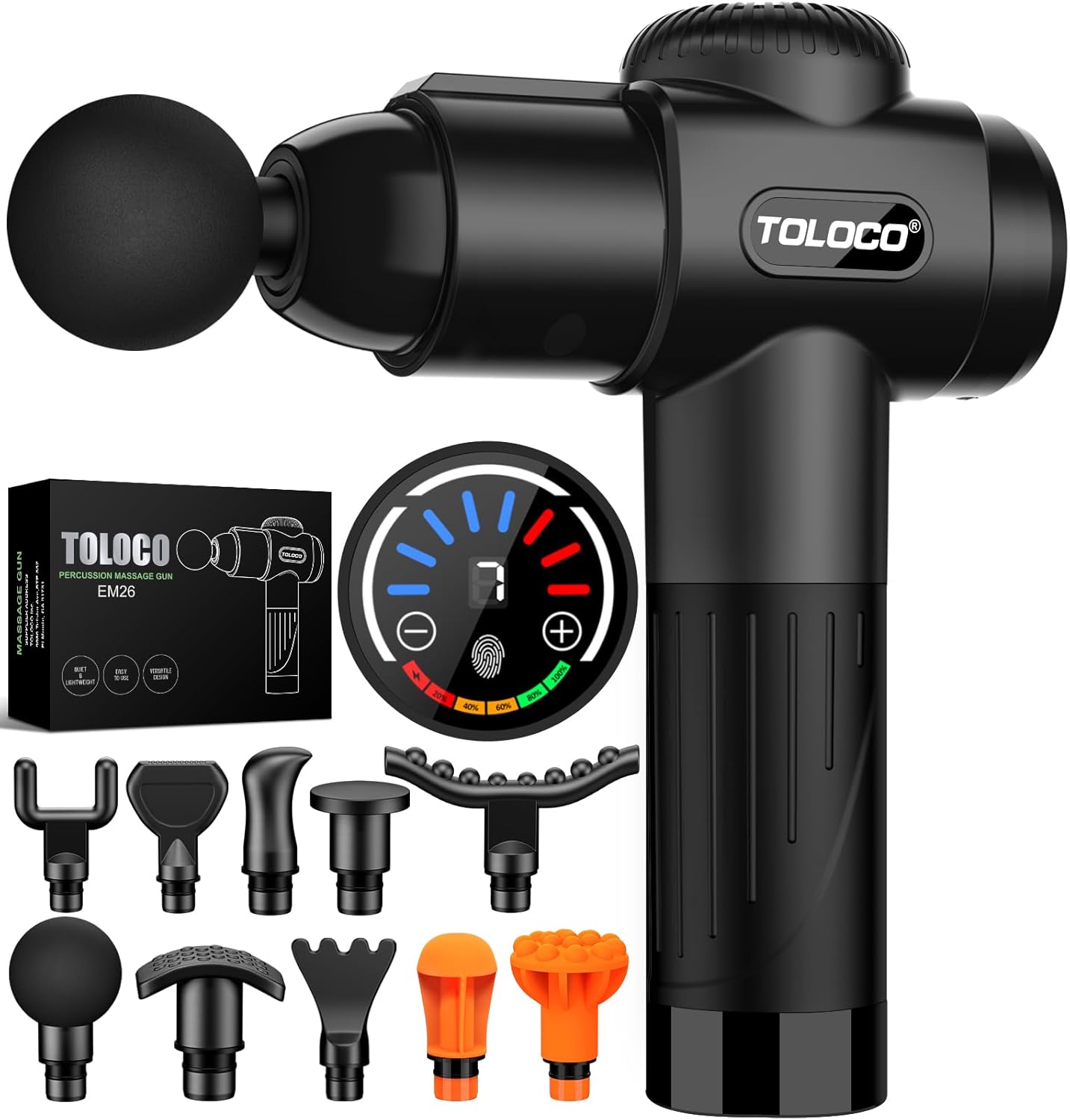
While percussive therapy can be incredibly effective, it’s important not to rely on it exclusively. Combine it with other recovery techniques for the best results. And remember, more isn’t always better. Excessive use can actually lead to increased muscle soreness, so stick to the recommended usage times.
If you don’t have access to a percussive therapy device, self-massage can still be beneficial. Use your hands or a massage ball to work out tight spots. Pay particular attention to your quads, IT bands, and calves – areas that often get tight from cycling.
For a more intensive massage experience, consider using a massage stick or roller. These tools allow you to apply more pressure than your hands alone and can be particularly effective for larger muscle groups like the quads and hamstrings.
9. Mindfulness and Meditation: Mental Recovery Matters
Physical recovery is important, but don’t neglect your mental state. Incorporating mindfulness or meditation into my daily routine can improve recovery and enhance focus during rides.
Just 10-15 minutes of guided meditation can help reduce stress, improve sleep quality, and even boost your pain tolerance – all crucial factors in recovery and performance.
Start with simple breathing exercises, focusing on taking deep, slow breaths for a few minutes each day. As you get more comfortable with the practice, move on to longer guided meditations specifically designed for athletes. These often include visualizations of successful performances or body scan exercises to promote relaxation.
Body scan meditations can be particularly helpful for cyclists. They involve mentally scanning your body from head to toe, noticing any areas of tension or discomfort. This practice helps you relax and increases your body awareness, which can be useful when you’re on the bike.
Mindfulness doesn’t have to be limited to formal meditation sessions. Try incorporating mindful moments throughout your day. For example, during your recovery ride, focus on the sensation of your breath, the feeling of your legs moving, or the sound of your tires on the road. This can turn your easy spin into a moving meditation, enhancing both physical and mental recovery.
Like any skill, mindfulness takes practice. Don’t get discouraged if your mind wanders at first – that’s completely normal. The key is to gently bring your attention back to your focus point whenever you notice your thoughts drifting.
10. Nutrient Timing and Supplementation: Fine-Tuning Your Recovery
While a balanced diet should be your primary source of nutrients, strategic supplementation can give your recovery an extra boost. Tart cherry juice is particularly effective because of its anti-inflammatory properties. Consuming 8-12 ounces twice daily, especially in the days leading up to and following intense training or competition, can noticeably reduce my muscle soreness and improve sleep quality.
Other supplements that may benefit cyclists include:
- Omega-3 fatty acids: These can help reduce inflammation and support joint health.
- Magnesium: This mineral plays a crucial role in muscle function and recovery.
- Vitamin D: Especially important for cyclists who train indoors or live in less sunny climates.
- Probiotics: These can support gut health and immune function, which are often stressed by intense training. Physician’s CHOICE Probiotics 60 Billion CFU is a highly rated option to try.

Timing your nutrient intake can be just as important as what you’re consuming. Focus on getting a mix of carbohydrates and protein immediately after your ride to kickstart recovery.
Then, make sure to eat a balanced meal within 2 hours post-ride to further support muscle repair and glycogen replenishment. For longer rides or races, you can start your recovery nutrition during the event. Aim to consume about 30-60 grams of carbohydrates per hour, depending on the intensity of the ride. This helps prevent excessive depletion of glycogen stores and can make post-ride recovery easier.
Be cautious with supplements and always talk to a healthcare professional before adding new ones to your regimen. What works for one cyclist may not work for another, and it’s important to find what’s right for your body.
Also, be aware that some supplements can interact with medications or have side effects, so do your research and start with small doses to assess your tolerance. Supplements should complement a healthy diet, not replace it. Focus on getting most of your nutrients from whole foods and use supplements strategically to fill in any gaps or provide targeted support for your training and recovery.
Key Takeaways:
- Recovery needs as much attention as your training.
- Incorporate a mix of physical and mental recovery techniques for best results.
- Listen to your body and adjust your recovery strategies as needed.
- Consistency in your recovery routine leads to long-term performance gains.
- Simple techniques like quality sleep and proper nutrition have powerful effects.
Frequently Asked Questions
How long should a recovery ride be?
A recovery ride typically lasts between 30 to 60 minutes. The key is to keep the intensity low, around 50-60% of your maximum heart rate or power output.
Can compression gear really improve recovery?
Yes, compression gear can aid recovery by promoting blood flow and reducing muscle swelling. Many cyclists find it particularly helpful after long rides or during multi-day events.
What’s the best food to eat after a long bike ride?
The best post-ride meal includes a combination of carbohydrates and protein. Good options include a smoothie with fruit and protein powder, or a meal with lean meat, whole grains, and vegetables.
How often should cyclists foam roll?
Ideally, cyclists should foam roll daily, especially after rides. Even on rest days, a quick 5–10-minute session can help maintain muscle flexibility and prevent tightness.
Is it okay to take a nap after cycling?
Yes, a short nap (20-30 minutes) after cycling can be useful for recovery. Just be careful not to nap too long or too late in the day, as this could interfere with nighttime sleep.
How can I prevent muscle soreness after cycling?
Preventing muscle soreness involves a combination of proper warm-up, gradual increase in training intensity, post-ride nutrition, hydration, and recovery techniques like stretching and foam rolling.
What’s the benefit of contrast therapy for cyclists?
Contrast therapy, alternating between hot and cold treatments, can help reduce inflammation, promote blood flow, and speed up recovery. It’s particularly useful after intense rides or races.
How does meditation help with cycling performance?
Meditation can improve focus, reduce stress, enhance pain tolerance, and improve sleep quality. All of these factors contribute to better recovery and overall cycling performance.
Are recovery drinks necessary after every ride?
Recovery drinks aren’t necessary after every ride, especially shorter, less intense ones. However, they can be useful after long or intense rides to quickly replenish glycogen stores and provide protein for muscle repair.
How much sleep do cyclists need?
Most cyclists benefit from 7-9 hours of sleep per night. However, during periods of intense training or racing, you might need even more sleep to fully recover.
Want to know more about how to maximize your workout recovery? Explore Recovery Essentials Hub for more information and products trusted by athletes and fitness enthusiasts. Your healthiest you starts today.
This post contains affiliate links. If you click on one and make a purchase, I may earn a commission at no additional cost to you. Rest assured, I only recommend products or services I believe will provide value to my readers.


